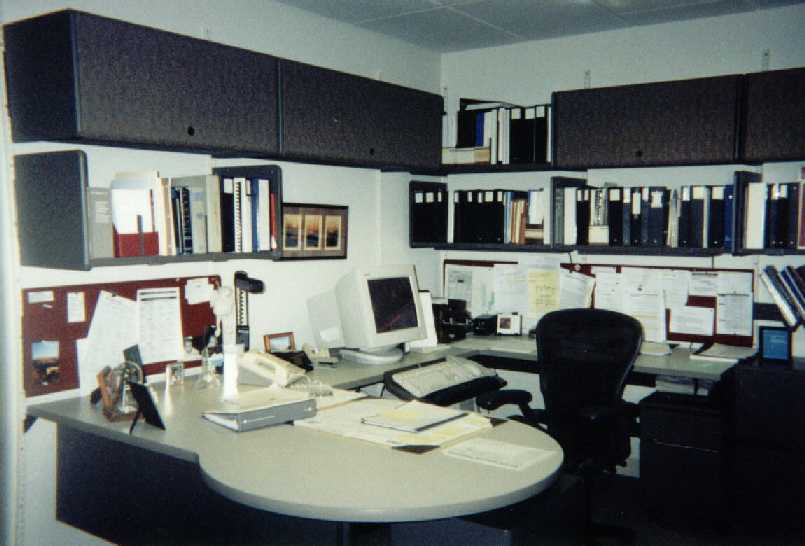How GAO Built Its Dream House
| Return to Table of Contents | < Previous Chapter | Next Chapter > |
Chapter 12, GAO Takes Charge of Its Building
In the late 1970s, the General Services Administration began an asbestos removal program in the GAO building. Originally scheduled for completion by 1982, the GSA effort ran into delays because of safety problems, a lack of funds, and increasing costs. In 1983, GAO informed Congress about the delays in asbestos removal and other problems with GSA. The Senate Committee on Appropriations called for the Comptroller General to work with GSA to assure timely removal of asbestos. It added that if a resolution was not worked out, it would consider "recommending the transfer of building ownership to the Comptroller General." GAO continued to express concern about delays in a number of GSA-run projects, and in 1987 the two agencies agreed to work out a transfer of custody. With the signing of Public Law 100-545 on October 28, 1988, the Comptroller General took over exclusive custody and control of the building.
 An extensive modernization effort occurred
during the tenure of Comptroller General Charles A. Bowsher. Again, the reasons were practical and aesthetic. GAO had to upgrade its electrical and communications network in order to
support computers, local area networks, and other modern technology. Its managers also sought to improve the physical surroundings by providing staff with a pleasant work environment. A
floor-by-floor asbestos removal and renovation project began in the mid-1980s, and continued through the 1990s. In addition to improving office and conference room space, the renovation
effort included remodeling the Comptroller General's suite and the cafeteria, moving and modernizing the GAO Technical Library, and constructing a fitness center and day-care center.
An extensive modernization effort occurred
during the tenure of Comptroller General Charles A. Bowsher. Again, the reasons were practical and aesthetic. GAO had to upgrade its electrical and communications network in order to
support computers, local area networks, and other modern technology. Its managers also sought to improve the physical surroundings by providing staff with a pleasant work environment. A
floor-by-floor asbestos removal and renovation project began in the mid-1980s, and continued through the 1990s. In addition to improving office and conference room space, the renovation
effort included remodeling the Comptroller General's suite and the cafeteria, moving and modernizing the GAO Technical Library, and constructing a fitness center and day-care center.
In 1994, employees of two divisions moved into newly renovated space on the fourth floor. According to the GAO Management News (November 21-25, 1994),
"The floor plan was designed to let in as much natural light as possible while providing individual workspace for each employee. Offices and cubicles, painted in pleasant shades of maroon, blue, and taupe, have been designed with GAO's computer network in mid; electrical systems and phone lines have been enhanced to meet the demands created by GAO's increased reliance on computers and telecommunications. Each office has been outfitted with ergonomic furniture and work stations to enhance productivity. Team rooms throughout the space enable staff members to work together on jobs; and a large conference room, outfitted with videoconferencing equipment, provides space for large gatherings."
The modernization effort continued into the year 2000, with employees moving into newly refurbished space on the second floor in 1996, the fifth floor in 1997, and the sixth floor in late 1999 and early 2000.
| Return to Table of Contents | < Previous Chapter | Next Chapter > |

